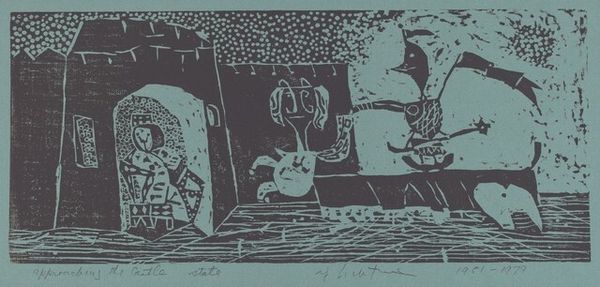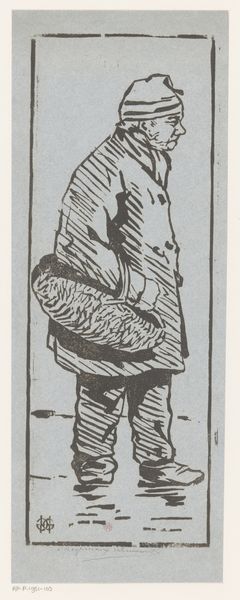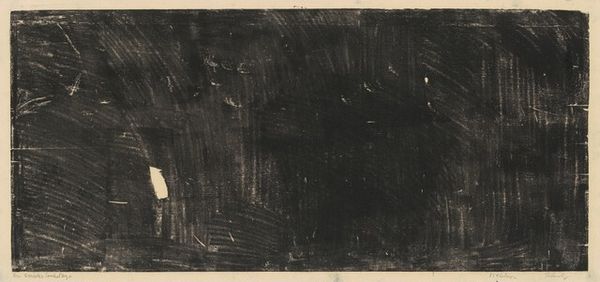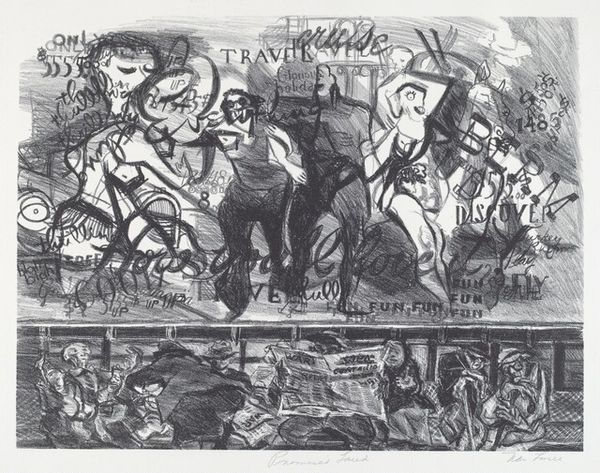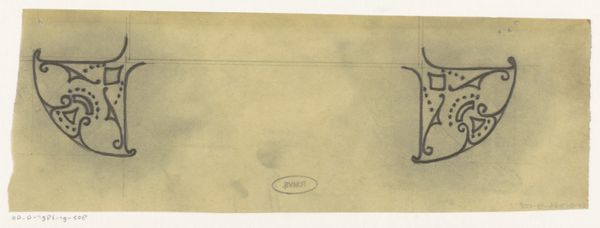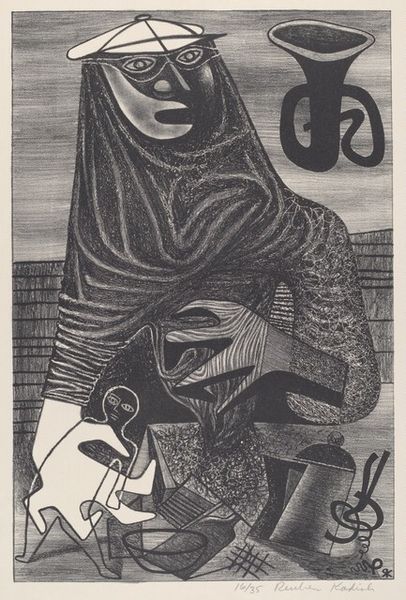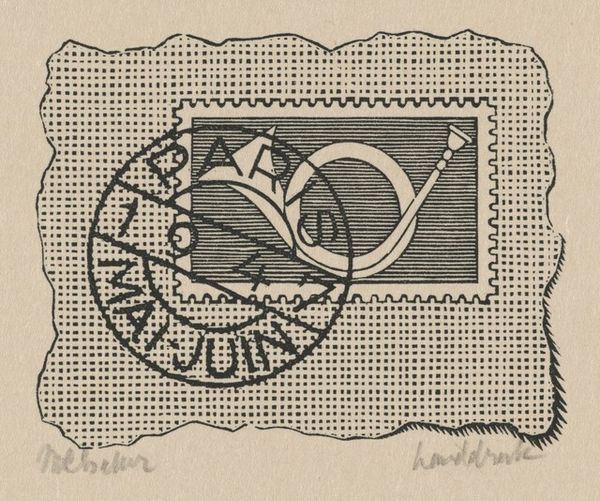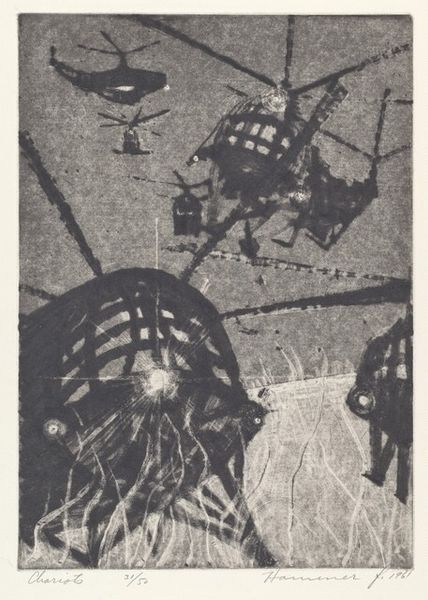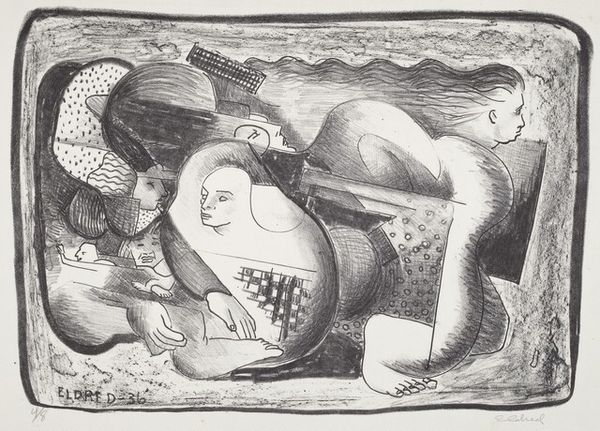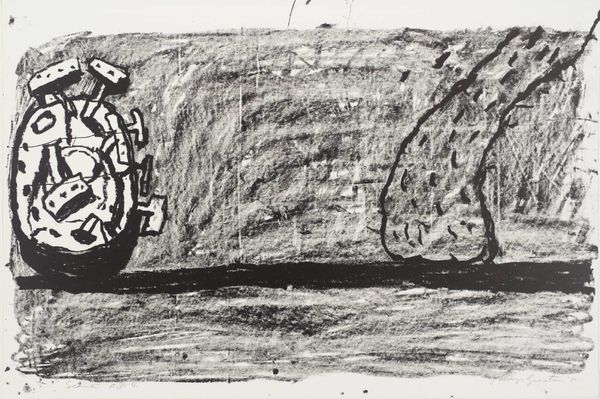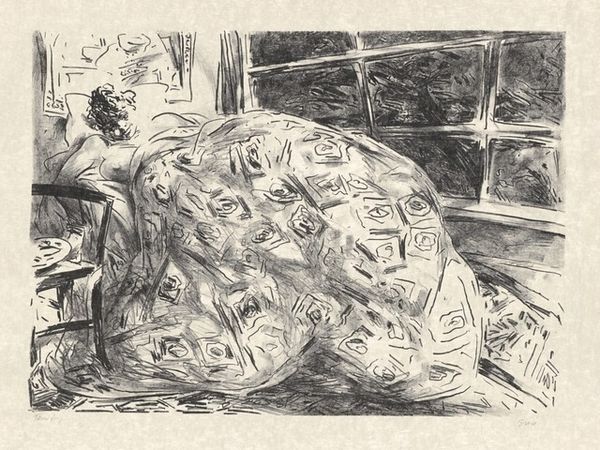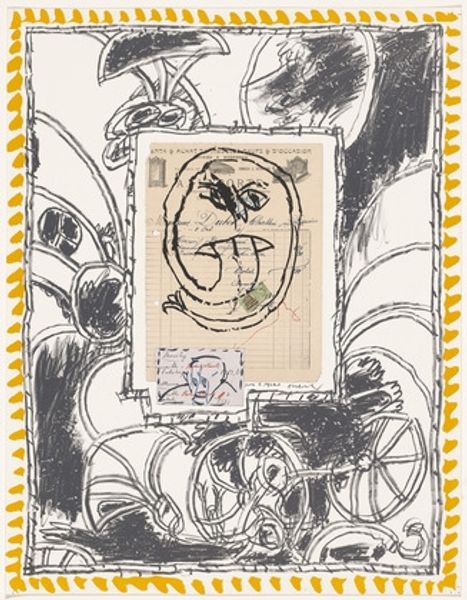
drawing, print, ink, graphite
#
portrait
#
drawing
# print
#
appropriation
#
ink
#
geometric
#
pop-art
#
graphite
Dimensions: image: 25 x 47.7 cm (9 13/16 x 18 3/4 in.) sheet: 48.1 x 61.5 cm (18 15/16 x 24 3/16 in.)
Copyright: National Gallery of Art: CC0 1.0
Curator: Lichtenstein's "Ten Dollar Bill," created in 1956, immediately strikes me as playful. It’s executed using ink and graphite, and there’s something inherently subversive in taking such a familiar, potent symbol and rendering it so… imperfect. What's your take? Editor: My initial impression is a raw anxiety. The lines feel rushed and scratchy, nothing like the precise engraving we associate with currency. Even without knowing it's Lichtenstein, there's a deliberate destabilization happening here. It’s almost nightmarish. Curator: Interesting! I see that tension, but I think Lichtenstein is also tapping into the symbolic weight of money itself. This print appropriates and distorts an American icon, the ten-dollar bill, which already embodies so many conflicting ideals. He lays bare the underlying abstract geometrical forms. Editor: Absolutely, the history of currency is entwined with the history of power. By 'defacing' this symbol, Lichtenstein, perhaps unwittingly, engages with that history of control and accessibility. He challenges our inherent trust, the unwritten social contract behind it. You almost wonder what the social climate of America at the time of creation was for him. Curator: His process is interesting, too. Lichtenstein translated that meticulous detail of printed currency into a more immediate, gestural medium of drawing. Think about it: Money promises stability, precision—a clear system of value. Lichtenstein delivers instead a handmade version. Editor: This hand-crafted aspect humanizes it, even if it also suggests forgery, right? Like an outsider’s understanding of the system. This could lead to thoughts regarding a shift in societal trust. He hints that currency, like everything, is an interpretation, and always on the brink of collapse, in an image made to be perfectly repeated and immutable. Curator: Well, thinking about it, this artwork, although relatively simple, reveals the underlying tension embedded within a simple ten-dollar bill: the promise and the fragility. Thanks for your opinion! Editor: It has been a pleasure looking into a potentially insightful reflection of pop-art from the American artistic canon together.
Comments
No comments
Be the first to comment and join the conversation on the ultimate creative platform.
